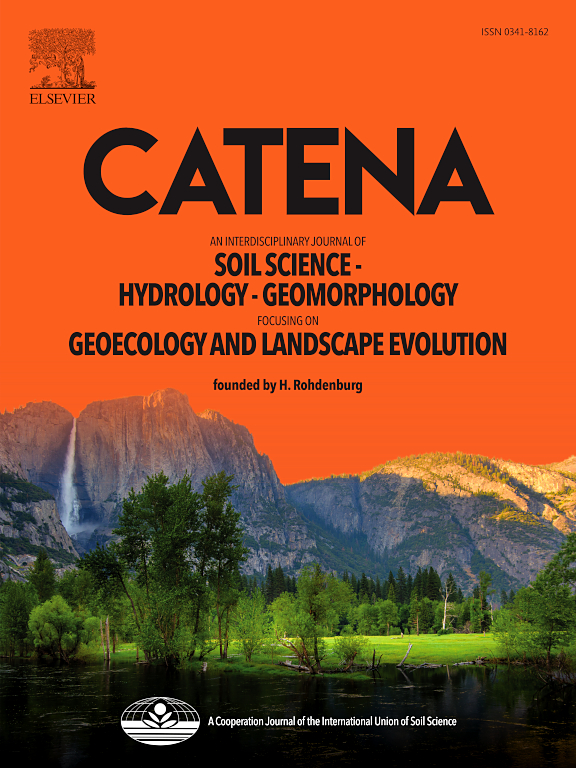High-resolution assessment of a hillslope affected by a debris flow 3-years after a wildfire
IF 5.4
1区 农林科学
Q1 GEOSCIENCES, MULTIDISCIPLINARY
引用次数: 0
Abstract
Debris flows (DFs) constitute a major hazard in mountainous environments, particularly in Mediterranean regions where the confluence of intense rainfall, frequent wildfires, steep topography, and a long and evolving history of land use favour their occurrence. This study investigates the dynamics of a hillslope in the Spanish Central System mountain range that experienced a wildfire in 2016 and a DF in 2019. Four LIDAR datasets (three acquired by a piloted aircraft and one by an Unmanned Aerial System) covering the period from 2011 to 2024 were used to calculate 3D changes from the point clouds. The study of hillslope dynamics was complemented by the utilization of rainfall data and additional cartographic products (ortophotographs, connectivity maps, digital elevation models, etc.). From 2011 to 2018, sheetwash erosion was the dominant process (with an average surface lowering of −4 cm·y-1), favoured by vegetation cover degradation caused by the 2016 wildfire. In 2019 a shallow landslide that evolved into a DF took place, mobilising 54 % of the total eroded material between 2018 and 2023. From 2023 to 2024, stabilization was observed in the upper portion of the hillslope, while the lower part continued to erode (with an average lowering of −3 cm·y-1). The DF increased connectivity within the channel and the scarp, fragmented the drainage on the hillslope through the formation of discontinuous levees and rills, and partially blocked the stream at the bottom of the hillslope. Rainfall data enabled the establishment of a new regional Intensity-Duration threshold for the development of fire-related DFs. Our study demonstrates that relatively common rainstorms can trigger fire-related DFs, which significantly alter hydrological connectivity, and this can occur several years after the fire.

求助全文
约1分钟内获得全文
求助全文
来源期刊

Catena
环境科学-地球科学综合
CiteScore
10.50
自引率
9.70%
发文量
816
审稿时长
54 days
期刊介绍:
Catena publishes papers describing original field and laboratory investigations and reviews on geoecology and landscape evolution with emphasis on interdisciplinary aspects of soil science, hydrology and geomorphology. It aims to disseminate new knowledge and foster better understanding of the physical environment, of evolutionary sequences that have resulted in past and current landscapes, and of the natural processes that are likely to determine the fate of our terrestrial environment.
Papers within any one of the above topics are welcome provided they are of sufficiently wide interest and relevance.
 求助内容:
求助内容: 应助结果提醒方式:
应助结果提醒方式:


